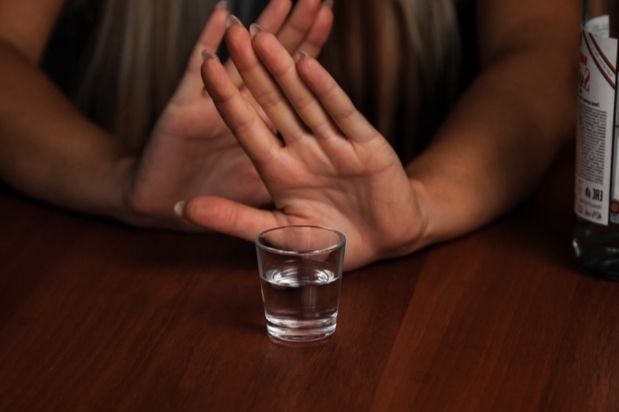Of the nearly 15 million adult Americans diagnosed with alcohol use disorder or AUD, most of them report finding an alcohol treatment helpful as they pursue their sobriety or recovery goals. Alcohol use disorders range from mild to severe. At elevated levels of intensity, clinicians also refer to severe AUD as alcohol dependence or alcoholism.
Popular treatments for AUDs, regardless of intensity level, include behavioral therapies and medications. Combining the two of them is often the most effective approach to treating AUDs. However, other sources of support can come from mutual-help groups like Alcoholics Anonymous (AA), which has been going strong for about 86 years. Also, there are innovative, unconventional treatment options like Internet-based, self-help smartphone apps, and spiritual practices that help people in recovery.
Inpatient and Outpatient Treatment Programs for Alcohol Use Disorders
Often a person will seek refuge as an inpatient at a facility for drug and alcohol rehabilitation. That would mean you could remain an inpatient at a facility for 30, 60, or 90 days—depending on your needs. Receiving treatment at an alcoholic rehabilitation center is a structured residential option that includes a tailored plan for a person’s recovery. It may involve several behavioral therapies and medical care with medication for safe medical detox. In detox, experts use medicine to manage the withdrawal symptoms often experienced as alcohol and other toxins leave the body after you’ve quit drinking.
For those individuals with a lower intensity of AUD or who may have already completed an inpatient program, an outpatient treatment option might be a better, more flexible fit. It can include mutual-aid groups, 12-step programming, psychotherapy, counseling, and medications like you’d receive in a residential program. Still, they’ll be able to go home when their activities end each day. This treatment is helpful but best suited for people who have a substantial amount of motivation and self-determination to reach sobriety.
Using Medicine to Treat AUD
The Food and Drug Administration has approved only three medications for the specific treatment of AUD:
- Acamprosate or Campral: helps a person maintain sobriety after they’ve quit drinking. It reduces craves by working on various brain systems.
- Disulfiram or Antabuse: causes a person to experience unpleasant symptoms like skin flushing or nausea when they have a drink. This drug aims to discourage the person from drinking because of the undesirable effects that arise with alcohol consumption.
- Naltrexone or Vivitrol: prevents the euphoria experienced when drinking by inhibiting specific receptors in the brain. It also reduces alcohol cravings, which can help a person taper off the amount they drink.
Researchers are still looking at other medications that, although intended to help with illnesses other than AUD, may show promise. Some of these medicines include topiramate, which usually treats migraines and epilepsy, and drugs taken for smoking cessation.
Treating AUD with Behavioral Therapies
Behavioral therapies are a form of clinical psychotherapy with foundational roots in cognitive psychology (the science of mental processes) and behaviorism (a theory that asserts the causation of a person’s behavior is by conditioning—not feelings, for example). When included as part of a treatment plan for AUDs or alcoholism, a popular term for these therapies is alcohol counseling. Some of the common modalities included in alcohol counseling include:
- Brief interventions: these are one to four short counseling sessions, either one-on-one or with a small group. You’ll receive information about risks related to your drinking and associated patterns. Next, you set goals with a counselor. Then, together, you and your provider develop ideas that can help you change those patterns and avoid those risks.
- Cognitive-behavioral therapy (CBT): the aim of this approach, whether in a group or one-on-one with a counselor, is to identify as many situations as possible and feelings that prompt your disorganized alcohol use. Then, you learn how to manage stress and other coping skills to change your thoughts that lead to excessive drinking.
- Family and couples counseling: these therapy sessions invite your family or spouse to be a part of your recovery. Sometimes, it's helpful to include close relatives in your drug and alcohol rehabilitation because it can improve relationships and provide extra support.
- Motivational enhancement therapy: the basis of the treatment is to improve intrinsic motivation and engagement in the change process. Motivational interviewing techniques provide a therapeutic environment for a patient that is non-confrontational, empathetic, and collaborative.
- Relapse prevention therapy (RPT): this CBT-derived treatment for AUD helps you recognize the cues in thinking, high-risk situations, or external cues that trigger cravings and relapse. With this intervention, you learn how to use coping strategies to minimize or avoid exposure to internal or external triggers, recognize warning signs of relapse, and develop a plan in place for relapse management.
Technology and the Internet’s Role in AUD Recovery
The COVID-19 pandemic forced many institutions to rely on Telehealth to continue caring for patients. With computer-based care, many people had more affordable treatment options through mobile apps and other Internet-based technology that provided 24-hour treatment access for people with AUD. The technology continues to develop for eHealth and its integration into treatment options.
The country is coming out of lockdown, and many people are preparing for “reentry,” but telehealth options will probably remain a viable alternative to in-person care. With internet-based tools, social networks, and mobile apps, people can take the self-help and self-management route for long-term recovery and they’re also a means to help anyone seeking new ways to stay connected to providers and find more resources, support, and solutions. As technology and web-based tools continue to emerge, people in recovery will have options to do several things:
- Set and monitor recovery goals
- Contact providers to ask questions or receive counseling
- Interact virtually with other people in recovery through social networks
- Give caregivers access to track progress and evidence of treatment adherence and much more.
The path of recovery is personal, which is why the various treatment plans for alcohol use disorders must have personalization to fit the individual. Choosing an alcoholic rehabilitation center in Los Angeles is just one of many options available to treat AUD. If you’re ready, skilled, trained professionals are available to help you begin your journey today.








